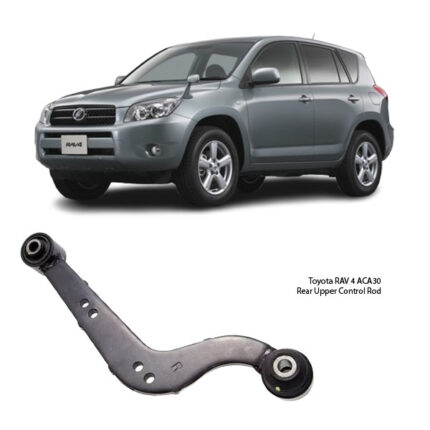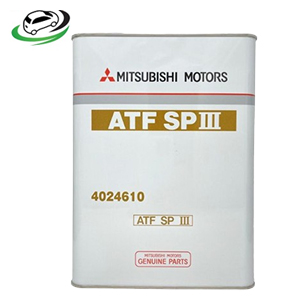Get Mitsubishi ATF SPIII 4Ltrs in Kenya
Automatic transmissions are among the most complex and sensitive components in any vehicle, and using the correct transmission fluid is vital to maintaining their performance and longevity. For Mitsubishi vehicles, particularly those with automatic transmissions designed to use Mitsubishi’s proprietary specifications, Mitsubishi ATF SP-III (SPIII) 4 Litres is the recommended choice. It is specifically formulated to meet the exacting standards required by Mitsubishi Motors Corporation for their automatic gearboxes.
What is Mitsubishi ATF SP-III?
ATF SP-III stands for Automatic Transmission Fluid, Specification III, and it is a high-quality, premium transmission fluid developed to deliver optimal performance in Mitsubishi’s automatic transmission systems. It was designed to replace the earlier SP and SP-II fluids, offering improved oxidation stability, enhanced friction properties, better low-temperature fluidity, and extended service life.
This fluid is not a generic ATF — it is tailored to work with specific Mitsubishi systems that require precise frictional characteristics. Using ATF SP-III ensures smooth shifting, reduced wear, and long-term durability.
Key Features and Benefits
-
Excellent Friction Characteristics
-
One of the core functions of ATF is to provide the right level of friction in the transmission. SP-III offers consistent and smooth gear shifting under all driving conditions. This means no jerking or hesitation when changing gears, whether in city traffic or on the highway.
-
-
Enhanced Oxidation Stability
-
Oxidation is the chemical breakdown of fluid due to heat. This fluid has a strong resistance to oxidation, meaning it maintains its properties even in high-temperature conditions. This results in longer fluid life and more stable transmission operation.
-
-
Superior Low-Temperature Performance
-
In cold climates or early morning starts, transmission fluids can become thick and sluggish. SP-III remains fluid at low temperatures, allowing for smooth start-up and immediate gear engagement even in cold conditions.
-
-
Reduces Wear and Tear
-
The formulation contains additives that minimize internal component wear, especially on clutches, bands, and gears. This helps extend the life of the transmission system and reduce maintenance costs over time.
-
-
Minimized Transmission Noise
-
Proper lubrication ensures quieter operation of the gearbox by reducing metal-to-metal contact and vibration.
-
-
Excellent Compatibility
-
SP-III is designed to be fully compatible with Mitsubishi automatic transmissions, eliminating the risk of incorrect fluid causing damage or poor performance.
-
Applications
Mitsubishi ATF SP-III is recommended for use in:
-
Mitsubishi vehicles equipped with automatic transmissions requiring SP-III fluid.
-
Select Hyundai and Kia models that also require SP-III specification fluid.
-
Some Dodge and Chrysler models manufactured in collaboration with Mitsubishi.
Important: Always check your vehicle owner’s manual or consult a technician before using ATF SP-III. Using the wrong transmission fluid can cause slippage, overheating, and even permanent damage to your transmission.
Why the 4-Litre Pack?
The 4-litre container is ideal for vehicle owners and technicians because:
-
It covers a typical ATF change requirement for many cars (often between 3 to 5 litres).
-
It provides better value per litre compared to smaller packaging.
-
It reduces the need to buy multiple smaller containers, making service more convenient.
For full transmission flushes or fluid + filter changes, more than one 4-litre bottle may be required, depending on the vehicle.
Genuine vs. Aftermarket
Mitsubishi ATF SP-III is available in both genuine OEM packaging and licensed aftermarket brands. While aftermarket alternatives might meet SP-III specifications, using genuine Mitsubishi ATF SP-III ensures:
-
Exact chemical formulation as originally intended.
-
Full compatibility with all transmission materials (seals, gaskets, etc.).
-
Retained vehicle warranty (where applicable).
-
Peace of mind for long-term performance.
If you’re running an auto garage or workshop, offering genuine Mitsubishi fluids helps build trust with clients who care about their vehicles’ reliability.
Service Intervals
Mitsubishi generally recommends changing ATF every 60,000 km to 100,000 km, depending on driving conditions. Vehicles operating in severe conditions (heavy towing, stop-and-go traffic, mountainous terrain) may require more frequent fluid changes.
Watch out for signs that ATF might need replacing:
-
Delayed or hard shifting.
-
Slipping gears.
-
Transmission overheating.
-
Burnt-smelling or dark-colored fluid.
-
Unusual noises during gear changes.
Regular maintenance using the right fluid helps avoid expensive transmission repairs.
How to Check ATF Condition
Many Mitsubishi models allow you to check ATF level and condition via a dipstick. Here’s how:
-
Park the vehicle on level ground and engage the parking brake.
-
Run the engine until it reaches normal operating temperature.
-
With the engine idling and the gear in ‘P’, remove the ATF dipstick.
-
Wipe it clean, reinsert it, and pull it out again to check the level.
-
Inspect the fluid color – healthy ATF should be bright red. Brown or black fluid indicates it’s time for a change.
Proper Handling and Storage
-
Store in a cool, dry place away from direct sunlight.
-
Keep the container tightly sealed when not in use.
-
Avoid contamination by keeping the container clean and preventing dirt or water from entering.
-
Dispose of used ATF responsibly — do not pour it into drains or onto the ground.
Available at Onestop Garage & Auto Spares
At Onestop Garage & Auto Spares, we stock Mitsubishi ATF SP-III 4 Litres, ensuring your Mitsubishi or compatible vehicle performs at its best. Whether you’re conducting a routine service or replacing worn transmission fluid, our products are reliable, authentic, and ready for immediate delivery.
-
Countrywide delivery available.
-
Expert advice from technicians on fluid compatibility.
-
Book your service online via our website.
Conclusion
Your transmission is the heart of your vehicle’s drivetrain. Choosing the right automatic transmission fluid, like Mitsubishi ATF SP-III 4 Litres, is essential for maintaining performance, reliability, and long-term durability. Whether you’re a DIY enthusiast or a professional technician, using this fluid ensures you deliver the best for your vehicle or your customer’s car.
Follow us on Facebook for more parts.



